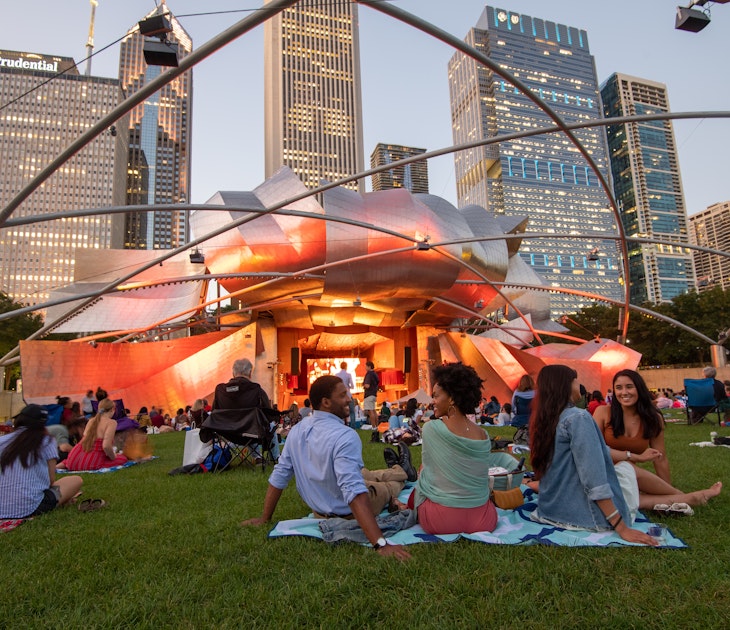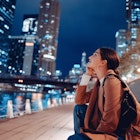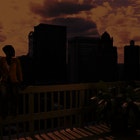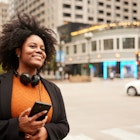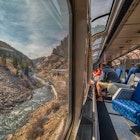Famous for its blustery winters, steamy summers and skyscraping skyline, Chicago sees the full range of seasons. But thanks to a calendar packed with festivals and events, a rich foodie scene and a full hand of world-class museums to duck into when the days get cold, there's always something happening in the Windy City no matter what month you visit.
With hot, humid days but plenty of lakeshore to catch the breeze, Chicago shines in the summertime, and spring and fall have their own charm, but in winter, lower tourist numbers and plenty of snow bring the holiday magic.
If you're looking for a city break with phenomenal art and architecture, truly globe-trotting cuisine and exuberant festivals, Chicago has plenty to lure travelers at any time of year. Here's our guide to the top times to visit the Windy City.

November to April is the best time to score big deals
Although Chicago's winter temperatures hover around the freezing point, the bitter lake wind can knock several dozen degrees off the highs due to the wind chill effect. But while below-zero temperatures scare many tourists away, bargains abound, particularly for accommodation. Travelers will have their pick of the deals on accommodation throughout the icy winter months, and tables at top restaurants are easier to find.
In late November and December, the holiday season brings festive light shows, holiday markets and outdoor ice-skating rinks, and the frosty lakeshore adds some extra Chicago magic. Michigan Avenue bustles with holiday shoppers and downtown shines with a million twinkling lights. Winter is the perfect time to warm up with some Chicago deep-dish pizza and form your own opinion on the city's feud with the New York-style pizza pie.
January is Chicago's coldest month, with temperatures hovering around 22ºF, and an icy wind blowing along the wind tunnels created by downtown's skyscrapers. This is also the city's snowiest month, with approximately 10 inches falling in an average year. Plan to stay inside as much as possible and enjoy all there is to eat and drink here. Museums are less crowded, too, making the winter season the best time to explore the Art Institute of Chicago, one of the world's oldest, largest and most-visited art museums.
The city is still deep in the throes of winter in February, but there are plenty of events to keep you busy, such as the Chinese New Year Parade, Cupid's Undie Run, and Chicago Theatre Week . Head up to the observation deck atop the former John Hancock Center for epic views over the frozen lake.
By March, many Chicago residents are wondering if the sun will ever shine again. Windy City-zens count the days during the grayest and windiest month when temperatures linger around 37ºF. However, some fun events take the edge off the cold, including the city's famous St Patrick's Day parade, when the Chicago River gets a shamrock-green makeover with biodegradable dye.
As spring begins in April, the weather can be unpredictable. Be ready for sun, snow, or rain – or maybe all three in the same day. That doesn't put off sports fans, who flock to Wrigley Field and Guaranteed Rate Field for the opening of the baseball season.
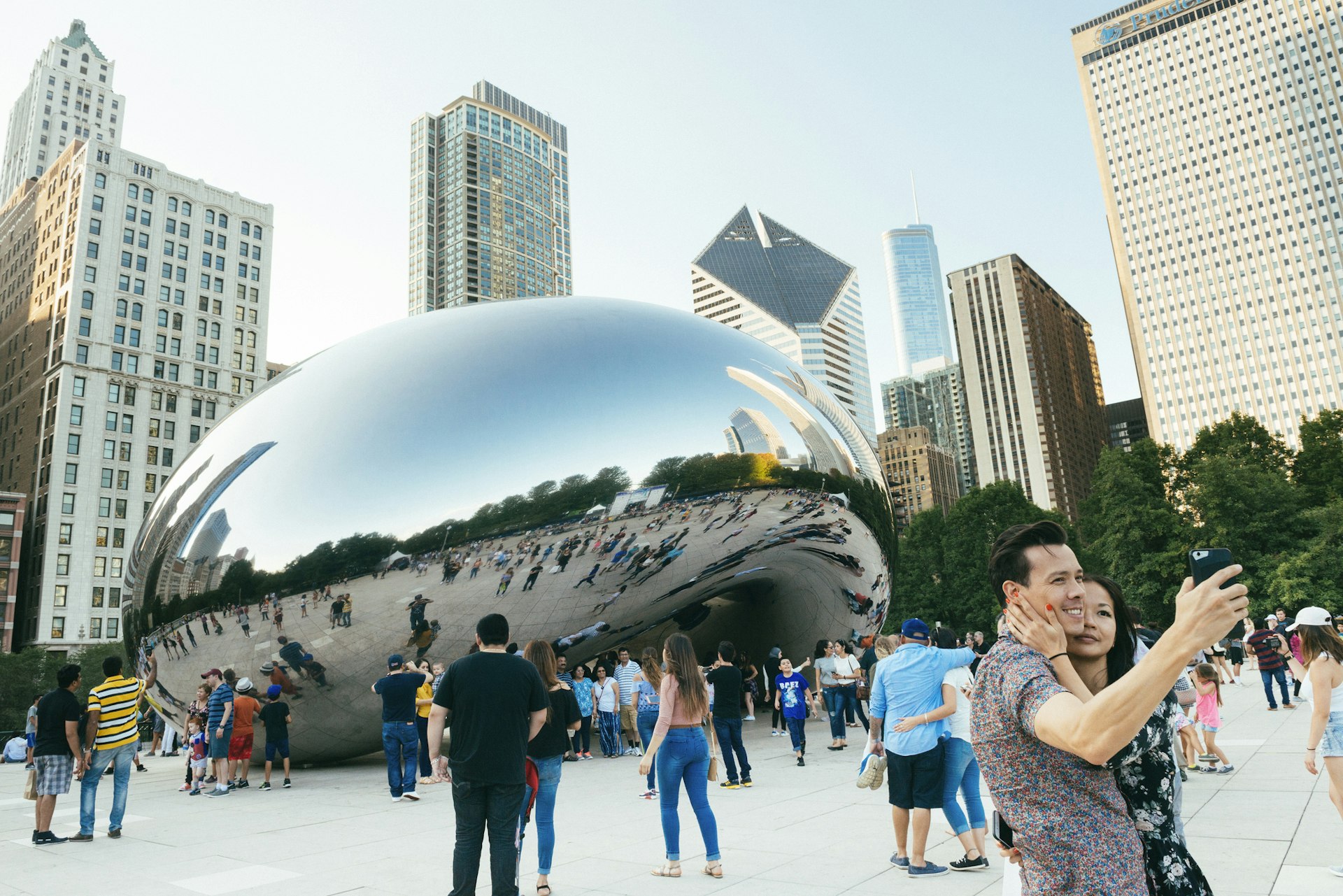
May and September to October are great times to enjoy less crowded museums
Chicago has two shoulder seasons – in late spring and early fall – when the city is either shaking off the winter chill or preparing to head into it. Both are excellent times to visit. Temperatures are a manageable 50ºF to 70ºF degrees, and there's a buoyant mood in the city, although rain is often in the forecast. Budget travelers can find good deals on airfares and accommodations, but keep an eye on the calendar; big sporting events and festivals can cause prices to spike temporarily.
In May, the weather finally warms up, spring rolls in, and everyone dashes to Chicago's parks, lakefront trails, baseball stadiums and beer gardens. Beaches open at the end of the month over the Memorial Day weekend and hotels see a rising number of travelers checking in. The better weather means a big turnout in the streets for music festivals such as Mole de Mayo and Sueños Chicago.
Kids go back to school in September and beaches close after the Labor Day weekend, as Chicago's peak visitor season begins to wind down. There's still plenty on the cultural calendar though, with the Chicago Jazz Festival, Riot Fest and the Chicago Architecture Biennial lighting up the city.
Temperatures drop even further in October, averaging 53ºF, and the baseball season is over, but basketball and hockey fill the gap at the end of the month. Chicago Bears' games and tailgate parties are still in full swing, while more active types put their energy into the Chicago Marathon.

June to August is the time to enjoy fantastic festivals and baseball
Warm weather and a packed festival calendar make summer the peak time to visit Chicago. When school's out, families descend on Chicago's beaches in droves for fun in the sun, and museums are often crowded with locals and visitors. Expect to pay top rates for hotels and vacation rentals. You'll also need to book sought-after restaurant tables and theater tickets well in advance.
In June, schools let out and festival season ramps up. The temperature creeps towards 80ºF, but it rains on a third of the days. That doesn't deter the people from partying during Chicago's spirited pride celebrations. One of the most popular ways to see the city in summer is on a boat tour, the best of which is run by the Chicago Architecture Center. And make the most of the city's many parks: art-filled Millennium Park marks the start of a chain of parklands running south along the banks of Lake Michigan.
July is the month Chicagoans wait for all year. Festivals rock Chicago's neighborhoods every weekend, with top billing going to Lollapalooza. Millennium Park has concerts downtown nightly, Taste of Chicago attracts visitors from all around the world, and fireflies glow everywhere. It can be hot and humid, but with so much to enjoy, who cares?
August is a time for warm, sometimes sizzling weather, concerts, festivals, baseball games, and beach frolicking. Tourists are still in Chicago en masse, so lodging prices are high, and lines can be long. Rabid Cubs fill the stands at Wrigley Field (or stake out seats on the Wrigley Rooftops overlooking the stadium if they can't get seats inside).


